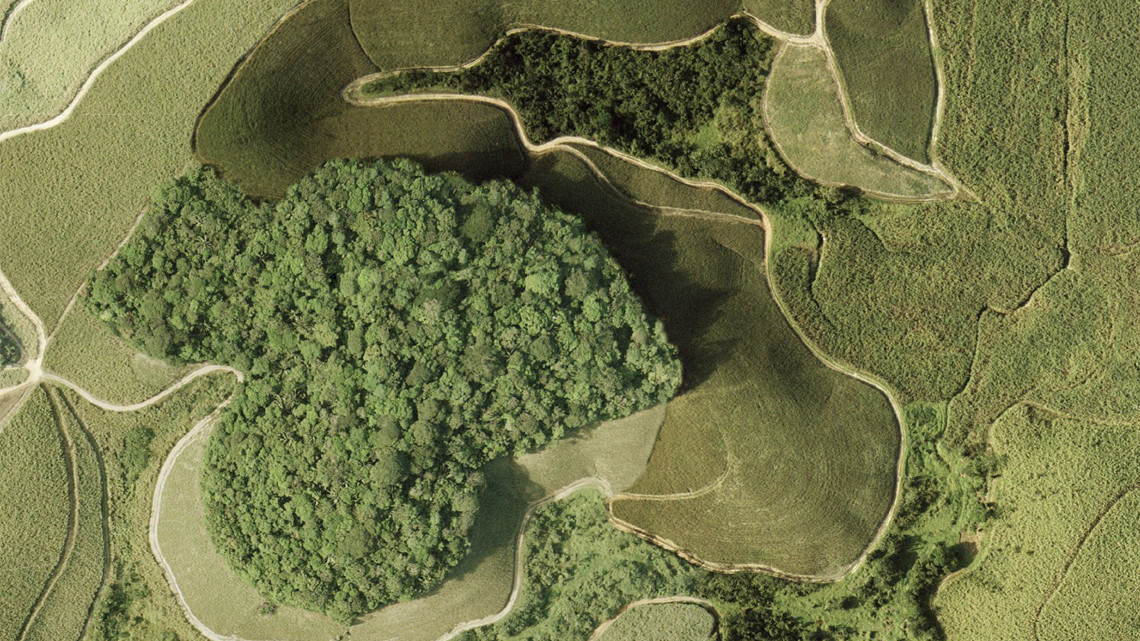Fragmented forests increase CO2 emissions
Tropical forests are being more and more fragmented. Leipzig-based scientists assessed that this increases carbon dioxide emissions by an additional third.

Half of the total global carbon dioxide stock is stored within the tropical vegetation, which only serves to worsen the consequences of tropical deforestation. Every year approximately 1,000 million metric tons of carbon dioxide are released due to deforestation. However, instead of complete forest removal, oftentimes the forests are fragmented into many smaller forest-areas. A new study by researchers at the Helmholtz Centre for Environmental Research (UFZ) and the University of Maryland published in the esteemed journal Nature Communications, reveals that forest fragmentation causes the release of an additional 340 million metric tons of carbon dioxide per year. The scientists argue that “The Intergovernmental Panel on Climate Change” (IPCC) should take this hitherto neglected effect into consideration in the future.
Adverse microclimate at edge of forest increases CO2 emissions
As part of the Helmholtz Alliance "Remote Sensing and Earth System Dynamics" the research team, headed by UFZ researchers Andreas Huth and Rico Fischer, investigated the consequences of the forest fragmentation regarding the carbon cycle and the global climate. "We have known for a long time that not only the complete loss of rain forests can exacerbate climate change," explains Andreas Huth. Fragmenting a larger forest area into several smaller ones already impacts the carbon balance.
Previous studies have shown that each year roughly twice as many trees are dying at the edges of forests than at the centre of healthy tropical forests. This is due to the fact that there is an unfavourable and adverse microclimate at the edges, which extends approximately 100 metres into the forest. Thus, the forest edges are not only missing the vegetation to take up carbon dioxide from the air, but because of the dead trees there is also more microorganism activity, which produces additional CO2.
Tropical forests in 50 million pieces
In order to measure the extent to which the forest-edge carbon dioxide affects the global climate, the researchers first assessed how many additional tropical forest edges are man-made. To that end they combined satellite images into huge maps with a high enough resolution to identify the forest coverage throughout the tropical areas. Subsequently they developed a new software to count the forest fragments and calculate the length of their edges. The startling results showed that by now 19% of all tropical forests are within 100 metres from the forest edge. In other words – one fifth of tropical vegetation is currently growing in an adverse microclimate. “This severe level of fragmentation is clearly due to human activity," says Rico Fischer. On a global scale humans are even responsible for 84% of tropical forest fragmentation. The earth’s tropical forests have by now been broken down into a total of 50 million fragments –with a total length of the edges amounting to almost 50 million kilometres. According to their newest measurements these vast forest edges are producing an additional one third of carbon dioxide to that, which is anyhow being released due to deforestation. Huth summarises: "Fragmentation therefore plays an important role in the global carbon cycle. Despite this fact, this effect has not been taken into consideration at all in the IPCC reports to date." The researchers hope that this will change in the future. In order to achieve effective climate protection, it will be necessary to stop chopping the forests into ever-smaller fragments. Preventing deforestation alone will not be enough.
jmr


